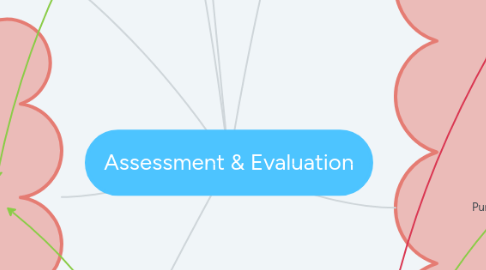
1. Educator makes adjustments
2. Professional Judgement
2.1. Justifiable decisions
2.1.1. Evidence based
2.1.1.1. Multiple sources
2.1.1.2. Across a period of time
2.1.2. Next steps
2.2. Timely specific feedback
2.2.1. Students make adjustments
2.2.2. Quantity or quality of feedback
2.2.3. Feedback as telling vs feedback as asking questions
2.3. Consequences
3. Safe inclusive learning environment
3.1. Partnership with students
3.1.1. Learners participate in assessment
3.1.1.1. Gradual release of responsibility
3.1.1.1.1. Co-regulation
3.1.1.1.2. Self Assessment
3.1.1.1.3. Peer Assessment
3.1.2. Involve learners in planning for assessment
3.1.2.1. Co-construct success criteria
3.1.2.2. Co-Construct learning goals
3.2. Encourage risk taking and mistake making
3.3. Differentiate Assessment Methods
3.4. Communicate what success looks like
3.4.1. Exemplars
3.4.2. Rubrics
3.4.3. Standards
4. Assessment tools/activities data collection
4.1. understand fit for purpose;
4.2. how it aligns to the curriculum
4.3. how to effectively administer the tool
4.4. how to appropriately respond to the results.
4.5. Representative sampling of material
5. Evidence to inform next steps
6. Interpret data
7. Learning Outcomes
7.1. Planning for alignment
7.1.1. What will students learn
7.1.2. How will we know transfer of learning
7.1.3. How will we collect evidence of learning
7.1.4. Success criteria
8. Purpose of Assessment
8.1. Formative
8.1.1. Ongoing Assessment over time
8.1.2. Assessment for Learning
8.1.2.1. Where we are, Where we are going, How we will get there
8.1.2.1.1. What a student already knows
8.1.2.1.2. Clarity of target/Outcomes
8.1.2.1.3. Adjust content and delivery to match student needs
8.1.2.1.4. Forward Looking
8.1.3. How data is used to inform learning
8.1.4. Low stakes
8.1.5. Mulitple sources of data
8.1.6. Assessment as learning
8.1.6.1. Monitor learning
8.1.6.2. Student self reflect, self assess, peer assess
8.1.6.3. Personalize learning goals
8.1.6.4. Plan next steps
8.2. Summative
8.2.1. Assessment of Learning
8.2.1.1. High stakes
8.2.1.2. Communication to stakeholders
8.2.1.3. Summary of student achievement
8.2.1.4. Periodic -End or learning cycle or period
8.2.1.5. Backwards Looking
9. Planning for Assessment
9.1. Understand Adult learners
9.1.1. Knowles Principles of Adult Leanring
9.1.2. Learner preferences
9.1.3. Learner motivation
9.2. Backwards design
9.2.1. Start at the end - what are desired outcomes
